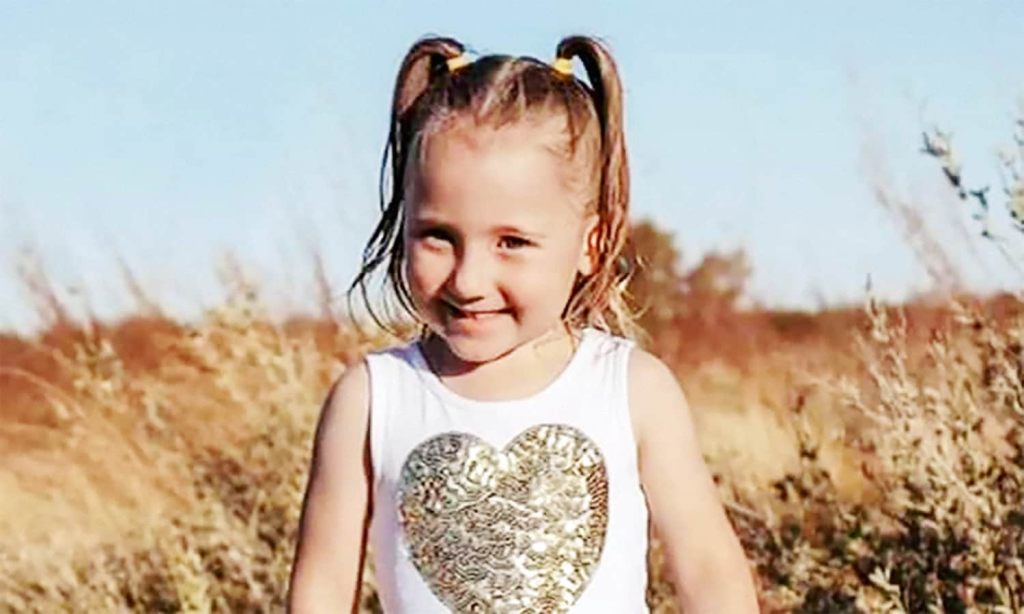The smiling, pigtailed toddler in the gold heart top. A picture of innocence, and sadly the image many people will now recognise – Cleo Smith was the latest Australian child to vanish without a trace.
Four-year-old Cleo disappeared from her family’s tent during the night at a campground north of Carnarvon, in Western Australia.
Police believed that she was most likely abducted. The WA government announced a reward of up to A$1 million for information about her disappearance.
At 1am on Wednesday, 3 November, police broke into a locked house in Carnarvon to find the girl alive and well.
Cleo was the latest missing child to grip the nation but our fascination with every twist and turn of such cases can both help and be a curse.
Huge Interest in the Case
Cleo’s case has drawn a high level of media and public scrutiny. Google is returning over 58 million hits on the child’s name; multiple news stories were appearing daily from all main media outlets.
Largely, the public had been concerned for the child, hoping for a safe return.
However, social media also went wild with speculation, with the mother and stepfather being openly attacked.
Comparisons were also drawn to other missing child cases – notably Azaria Chamberlain, who vanished from a campsite at Uluru in 1980. Later the coroner ruled Azaria had been snatched and killed by a dingo.
Then there was William Tyrrell, the little boy in the Spiderman suit, who disappeared without a trace from his grandmother’s house in Kendall, New South Wales in 2014. Sadly, what happened to William remains a mystery.
More recently, three-year-old Anthony “AJ” Elfalak, a non-verbal boy with autism, went missing from a rural property in NSW in September 2021. Fortunately, he was found safe and well after three days.
Thankfully the same is now true of Cleo.
Why Do Lost Children Evoke Such a Response?
The public is so interested in missing children cases for a number of reasons, beyond concern for their obvious vulnerability.
Children represent our future. We are heavily invested in kids from both an evolutionary perspective, as well as psychologically.
When a child goes missing, the event represents a threat to our sense of predictability, order and security in the world. Consciously or not, we have a desire to fix this, which can only occur if an abducted child is returned.
Without the child being returned, the need for certainty in our own life is difficult to restore. Children, after all, continue our gene pool and blood line. Arguably, without them, we are only one generation away from extinction as a species.
News of the abduction of children also occurs in real time. And the internet is both helpful and a curse.
Bad news spreads fast. This can be of great assistance in raising public awareness and engaging members of the public to do some basic detective work.
News spreading online can also jog the memories of potential witnesses. The information collected this way can significantly help police.
However, the minute-by-minute analysis of child abduction cases can have a major impact on our collective psyche.
Such non-stop coverage often occurs with prurient, distressing detail, tearful press conferences and what seems to be an interminably long waiting game, with generally no news or tragic outcomes to report.
In real-time, we are taken into the very private lives of the child’s family, their homes, their toys, their backyards and their activities.
This invasion of personal space further reinforces the public’s strong sense of identification with the family. We relate to their grief, their anger and their anxiety. It could, after all, be our child who has been taken.
There is an emotional connection and generally speaking, enormous empathy for these families. In a sliding-door moment of time, these families are plucked from obscurity, to find themselves front-page news, spreading like wildfire through social media.
We also share their fears for the worst.
Then There Are the Conspiracy Theories
Keyboard warriors vent their anxiety and, at times, anger, online. Wild stories with sinister undertones circulate and propagate, laying blame at family members, associates or the police investigation.
For some, this provides a sense of identity and security. By expressing opinions online, the keyboard warrior feels a greater sense of connectivity with the victim, even if they live on the other side of the country, or on another continent.
By reaching out in this way, albeit at times in an offensive and cruel manner, they feel a sense of empowerment and control.
However, these conspiracy theories can have a devastating psychological impact on those involved. And the lack of awareness of this impact on individuals and families truly beggar’s belief.
These conspiracy theories can also impede the investigation as they’re a major distraction.
There’s Collective Grief
When the investigation ends with a tragic outcome, or for some, arguably worse, no outcome, the collective grief in our community can be immense.
This is linked with the strong sense of identification and fear we experience when a child is taken from a family.
It is the premature and unexpected loss of a child, even anonymous, through evil processes beyond our control that can trigger these strong reactions.
Fortunately, a child disappearing without a trace is rare in Australia, and the entire country is held its collective breath, hoping Cleo would be found soon.
Having worked with many crime victims, including families who have lost loved ones and whose cases remain unsolved, until this mystery was solved, we know the pain was enduring for those closest to this little girl.
So we would ask for kindness and consideration in how the community discusses this case – including on social media. Words have power, so please choose yours carefully.
Xanthe Mallett is a Forensic Criminologist at the University of Newcastle.
Tim Watson-Munro is a criminal psychologist.![]()
This article is republished from The Conversation under a Creative Commons license.
Read more stories from The Latch and subscribe to our email newsletter.







